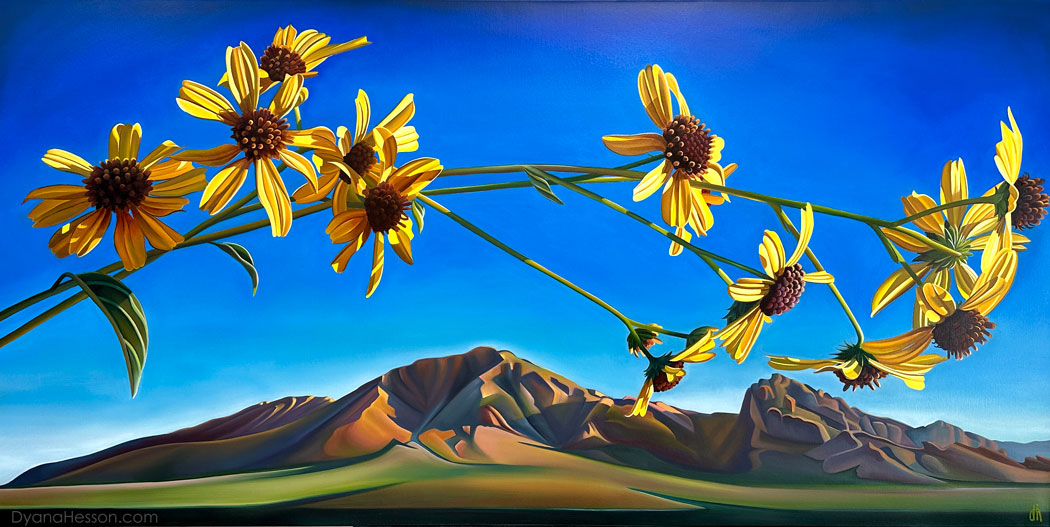Description
I’ll Be Back
Brittlebush over Camelback Mountain, AZ
60×30 Oil on Canvas
There are so many things that are iconic about Arizona; sunsets, saguaros, and the howl of a coyote at day’s end. But if you’ve spent any time in the more populated cities of Scottsdale or Phoenix you’ve undoubtedly seen one of our most famous icons; a mountain named for a resting camel. It’s lovely from all angles, and its visibility aids in navigation. From my home, Camelback’s hindquarters are a stately set of pyramids that appear deep blue at sunset. From the south, the camel gazes towards the west, and homes climb its slopes as hikers march along its back. But perhaps the loveliest view of Camelback can be seen from the southern slope of Mummy Mountain to the north.
From this vista, you have a great view of Paradise Valley. You can almost imagine the large plots of farmland that were irrigated here in the early 1900’s, courtesy of redwood flumes carrying water from the Verde River. Over the years, the early ranches and estates gave way to resorts and homes, but the beauty and charm of this valley remains.
The Camel is not going anywhere, and neither are the flowers. Long before ranchers and farmers and water flumes, the brittlebush bloomed. Native Americans counted on it. It was used to treat headaches, joint pain and wounds. The stems were utilized to produce a clear resin used for glue. Even following a dry winter, you can count on the sunny yellow brittlebush flowers to grace Arizona slopes and washes. *
On this sunny April day, it was all as it should be. After heavy winter rains, the air was clean and the happy yellow flowers were swaying in the breeze. Camelback looked sleepy, as he always does, and in the distance, I’m sure I heard a coyote howl.
* “The hairs on the brittlebush plant serve several purposes. Many desert plants have hairy leaves or stems. The hairs act like a blanket over the leaves to protect them from the heat and cold. The white color reflects the sunlight helping to keep the plant cool. They also help trap any moisture and reduce the amount of water lost.” – Arizona Sonoran Desert Museum
